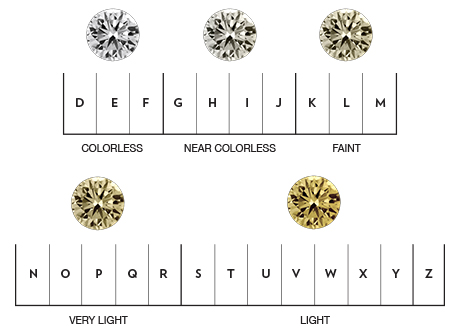.jpg)
.jpg)
Round: As the name suggests, it is round in shape and the most popular of all the shapes. It is a timeless beauty that maximizes the brilliance of a diamond.
.jpg)
Princess: Princess cut is the second popular shape. In this, a diamond is cut into a square shape with pointed corners mirroring your sharp and edgy persona.
.jpg)
.jpg)
.jpg)
Emerald: An Emerald Diamond flaunts an elongated, rectangular shape with chiseled step cuts. Its sleek and clean look bears the mark of elegance and sophistication.
.jpg)
Pear: A Pear cut is also known as the Teardrop or Pendeloque cut. It is a non-traditional cut that blends the Marquise and Oval cut, with a round bottom end and a pointed end on the other. This cut also makes a wearer’s finger appear slender.
.jpg)
.jpg)
.jpg)
Radiant: A Radiant diamond is a graceful combination of Round and Emerald cut. It inherits the brilliant facets of a Round cut and the purity of an Emerald cut. Radiant cut diamonds are usually square in shape.
.jpg)
Marquise: Marquise diamonds are long and narrow, creating an illusion of greater size than its carat value. This makes the wearer’s finger appear longer and slimmer.
.jpg)
.jpg)
.jpg)
Cushion: A Cushion cut sports a square/rectangle shape with rounded corners, representing a pillow, hence the name. Their large facets often make the diamond appear brighter.
.jpg)
Heart: The Heart shaped diamond is a timeless symbol of love. It has two round edges with a single cloven and is pointed on the other side. Heart-shaped Solitaires are a unique alternative to traditional proposal rings but are limited to stones with higher carat value.
.jpg)
.jpg)
.jpg)
Oval: The oval cut is a modified and elongated version of a round cut and offers a similar brilliance and sparkle. This cut also gives an illusion of a long finger.
.jpg)
Asscher: The Asscher cut is similar to a square Emerald cut with layered facets, a higher crown and a deep pavilion.
.jpg)
.jpg)
.jpg)
Round: As the name suggests, it is round in shape and the most popular of all the shapes. It is a timeless beauty that maximizes the brilliance of a diamond.
.jpg)
Princess: Princess cut is the second popular shape. In this, a diamond is cut into a square shape with pointed corners mirroring your sharp and edgy persona.
.jpg)
.jpg)
.jpg)
Emerald: An Emerald Diamond flaunts an elongated, rectangular shape with chiseled step cuts. Its sleek and clean look bears the mark of elegance and sophistication.
.jpg)
Pear: A Pear cut is also known as the Teardrop or Pendeloque cut. It is a non-traditional cut that blends the Marquise and Oval cut, with a round bottom end and a pointed end on the other. This cut also makes a wearer’s finger appear slender.
.jpg)
.jpg)
.jpg)
Radiant: A Radiant diamond is a graceful combination of Round and Emerald cut. It inherits the brilliant facets of a Round cut and the purity of an Emerald cut. Radiant cut diamonds are usually square in shape.
.jpg)
Marquise: Marquise diamonds are long and narrow, creating an illusion of greater size than its carat value. This makes the wearer’s finger appear longer and slimmer.
.jpg)
.jpg)
.jpg)
Cushion: A Cushion cut sports a square/rectangle shape with rounded corners, representing a pillow, hence the name. Their large facets often make the diamond appear brighter.
.jpg)
Heart: The Heart shaped diamond is a timeless symbol of love. It has two round edges with a single cloven and is pointed on the other side. Heart-shaped Solitaires are a unique alternative to traditional proposal rings but are limited to stones with higher carat value.
.jpg)
.jpg)
.jpg)
Oval: The oval cut is a modified and elongated version of a round cut and offers a similar brilliance and sparkle. This cut also gives an illusion of a long finger.
.jpg)
.jpg)



.jpg)

.jpg)




.png)




